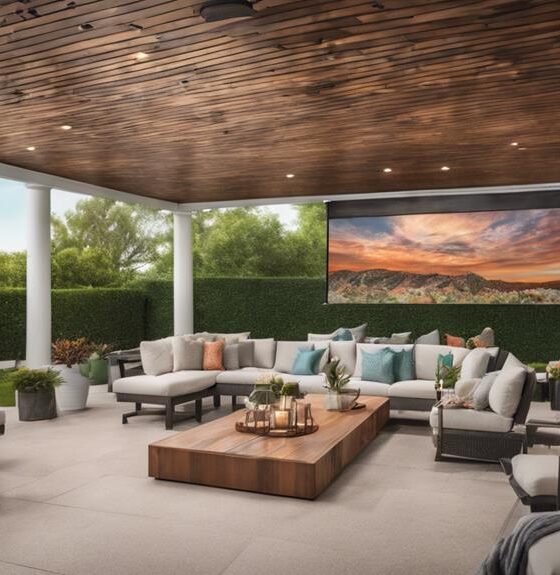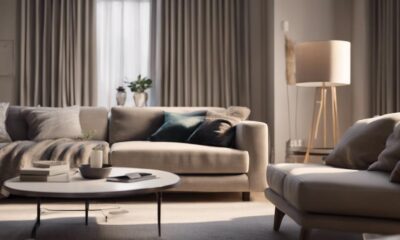Decor
How to Incorporate Animal Print Decorations in Your Living Room
Never underestimate the transformative power of animal prints in your living room decor – discover how to elevate your space with a touch of the wild!
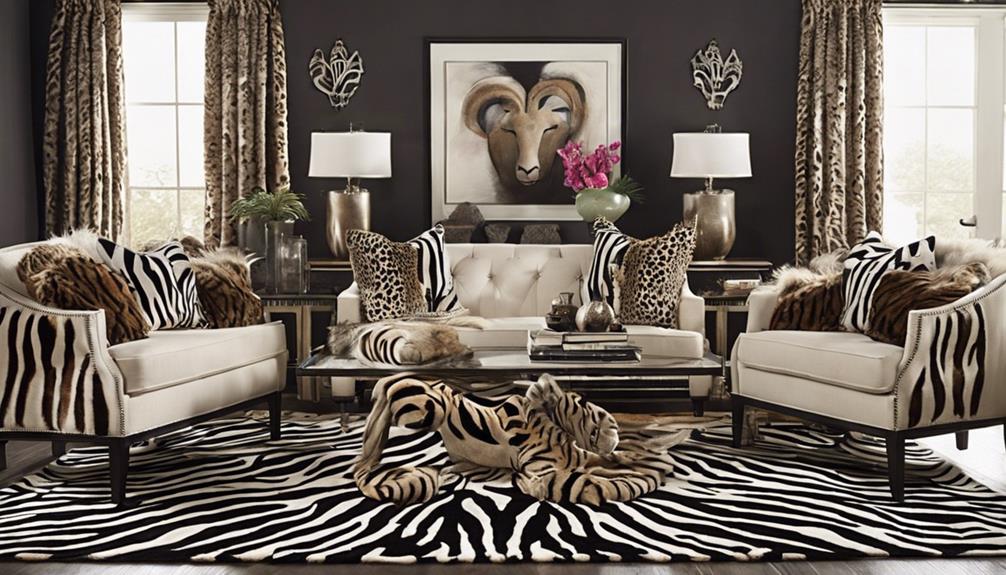
Did you know that incorporating animal print decorations in your living room can increase the perceived value of your home by up to 12%?
The allure of animal prints lies in their ability to infuse a space with elegance and a touch of the wild.
From bold zebra stripes to subtle cheetah spots, animal prints can transform a room when used thoughtfully.
Stay tuned to discover how to tastefully integrate these exotic patterns into your living room decor.
Key Takeaways
- Use animal print as bold focal points for visual interest.
- Mix prints with solid colors for a balanced look.
- Incorporate animal prints sparingly for elegance and charm.
- Blend animal print textiles creatively with neutrals for sophistication.
Choosing the Right Animal Print Pieces
How can we elevate the ambiance of our living room with the perfect animal print pieces? When delving into interior design, animal prints like zebra and leopard print can act as striking focal points that infuse a sense of boldness and sophistication into our space. Opting for zebra print rugs can instantly transform the room, creating a high-impact statement that ties the design together. To introduce a touch of the wild side in a more subtle manner, animal print cushions and throws offer a versatile way to experiment with textures and patterns while maintaining a cohesive look.
Incorporating animal print furniture, such as chairs or footstools, can further enhance the visual interest of the room. Mixing different animal prints can create a cohesive theme that adds depth and character to the space. Confidence plays a pivotal role in successfully integrating animal prints into our living room decor, allowing us to embrace the unconventional and make a stylish statement that showcases our unique personality.
Mixing Animal Prints With Solid Colors
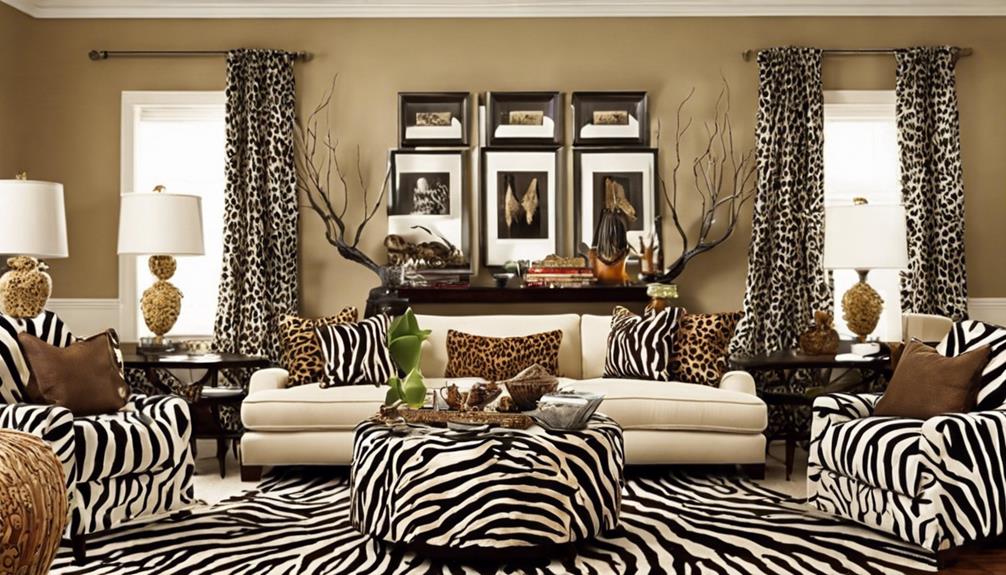
Blending animal prints with solid colors infuses a harmonious balance of boldness and sophistication into your living room decor. When mixing these elements, consider the following to achieve a cohesive and visually appealing design:
- Pair a zebra print rug with a solid-colored sofa in neutral tones like beige or cream to create a chic and modern look.
- Use solid black throw pillows on a leopard print armchair to add a touch of elegance while keeping the overall design balanced.
- Opt for a solid white coffee table to complement the busy pattern of a cheetah print accent chair, allowing the animal print to be a focal point in the room.
- Choose solid-colored curtains in a soft grey to tone down the intensity of a vibrant snake print wallpaper, creating a harmonious atmosphere.
- Incorporate solid-colored artwork or decorative pieces in metallic tones to balance the richness of multiple animal prints, creating a sophisticated and polished living room aesthetic.
Using Animal Print Accents Sparingly
To achieve a tastefully balanced and stylish living room decor, sparingly incorporate animal print accents as vibrant highlights amidst neutral tones and textures. When decorating with animal prints, less is often more. Opt for subtle touches like animal print throw pillows or a chic zebra rug to infuse your space with a hint of exotic charm.
Consider choosing a statement piece, such as an animal print ottoman or accent chair, to serve as a focal point in the room. By blending these bold accents with a backdrop of soothing neutral colors and textures, you can create a harmonious and sophisticated ambiance that's both eye-catching and elegant.
Experiment with mixing animal prints with solid colors and other patterns to add depth and visual interest to your living room decor. Remember, the key to successful home decor lies in the art of balance and restraint when it comes to incorporating animal prints into your space.
Incorporating Animal Print Textiles
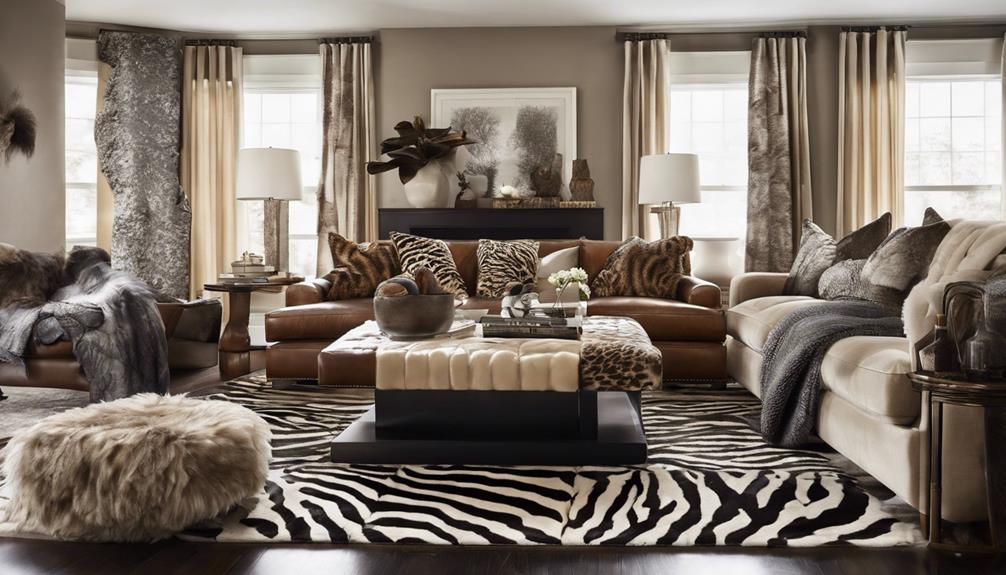
Embrace the allure of animal print textiles to infuse your living room with a touch of exotic sophistication and flair. When incorporating animal print textiles in your space, consider the following:
- Mix and Match Textiles: Combine different animal print textiles like cushions and throws to create a cohesive and stylish look that adds character to your space.
- Statement Pieces or Subtle Accents: Use animal print textiles as bold statement pieces to liven up the room or as subtle accents to add a hint of wild charm without overwhelming the space.
- Complement Existing Decor: Pair animal print textiles with your current furniture and decor to ensure a harmonious overall aesthetic in your living room.
- Experiment with Textures and Patterns: Explore a variety of animal print textures and patterns to find the perfect balance that suits your style and enhances the ambiance of your home.
- Rug as a Focal Point: Consider incorporating an animal print rug to anchor the room and make your space feel cohesive, inviting, and on-trend.
Balancing Animal Prints With Neutrals
Achieving a harmonious fusion of animal prints and neutrals in your living room decor guarantees the space's sophistication and charm. To strike the perfect balance, opt for neutral colors like beige, gray, or white alongside bold animal prints such as zebra or emerald green accents.
Introducing neutral furniture pieces can help create a cohesive and harmonious look, allowing the animal prints to stand out without overwhelming the space. Consider incorporating a cowhide rug to add a touch of texture and pattern while maintaining the overall neutral theme.
Neutral walls or flooring can act as a subtle backdrop, allowing your animal print decor elements to shine. By mixing animal prints with neutrals, you can achieve a sophisticated and elegant design that's visually appealing and innovative. This combination guarantees that your living room exudes a sense of style and balance that's both modern and timeless.
Frequently Asked Questions
How Do You Incorporate Animal Prints?
We infuse animal prints with finesse, blending zebra, leopard, and tiger patterns for a chic vibe. Mixing textures and colors, we harmonize bold furniture pieces and accent decor to create a stylish sanctuary that reflects our wild side.
What Patterns Go With Animal Print?
When mixing animal prints, we blend them with stripes, florals, and more for a lively space. Combining different animal prints in a matching color scheme creates a harmonious and alluring look.
Is Animal Print Still in Style 2024?
Absolutely, animal print remains a chic and trendy choice in 2024! Its timeless allure effortlessly elevates any space. Designers are constantly finding new and innovative ways to incorporate this classic pattern, ensuring it stays stylish and sophisticated.
What Color Goes Well With Animal Print?
We believe that various hues like neutrals, earthy tones, bold colors, metallic accents, and classic black and white can all harmoniously complement animal prints, adding depth and character to a living space.
Conclusion
Incorporating animal print decorations in your living room can elevate the space to a whole new level of sophistication and luxury. By carefully choosing the right pieces, mixing prints with solid colors, using accents sparingly, and balancing with neutrals, you can achieve a stylish and cohesive look.
So, why not take a walk on the wild side and add a touch of animal print flair to your living room?
- About the Author
- Latest Posts
Introducing Ron, the home decor aficionado at ByRetreat, whose passion for creating beautiful and inviting spaces is at the heart of his work. With his deep knowledge of home decor and his innate sense of style, Ron brings a wealth of expertise and a keen eye for detail to the ByRetreat team.
Ron’s love for home decor goes beyond aesthetics; he understands that our surroundings play a significant role in our overall well-being and productivity. With this in mind, Ron is dedicated to transforming remote workspaces into havens of comfort, functionality, and beauty.
Architecture Home Styles
How to Tell How Old Your Shingles Are
Get a head start on understanding your roof's age with simple tips and tricks – you won't believe how easy it is!

As homeowners, we often underestimate the age of our shingles, with studies showing that over 70% of individuals are unsure how old their roof truly is.
But fear not, determining the age of your shingles is not as daunting as it may seem. By examining subtle clues and employing a few key strategies, you can uncover the mystery surrounding your roof's lifespan.
Let's shed light on this essential aspect of home maintenance together.
Key Takeaways
- Assess shingle condition and installation records for age estimation
- Consult a roofing professional for expert opinion on shingle aging
- Look for signs like curling, damage, and granule loss to determine age
- Plan for replacement based on estimated lifespan and budget accordingly
Methods to Determine Shingle Age
To accurately determine the age of shingles, we rely on various methods that involve assessing installation records, physical condition, and environmental factors. Examining the building permit for the installation date is a crucial step in estimating the age of the roof.
Additionally, evaluating the quality and condition of the shingles for signs of aging such as curling, cracking, or missing granules can provide valuable insights. Requesting a receipt from the roofing contractor who installed the shingles can also help pinpoint the age of the roof.
Considering environmental factors like roof pitch, ventilation, and sun exposure is essential in estimating shingle age. Previous owners may have information on the roof's age that can be beneficial during this process. However, to ensure accuracy, a professional inspection is recommended.
This inspection can identify any damage, provide a more precise estimation of the roof's age, and offer insights into potential maintenance or replacement needs.
Importance of Knowing Shingle Age

Understanding the age of your shingles is crucial for planning maintenance and ensuring the longevity of your roof. When it comes to the age of your roof, knowing how old your shingles are provides valuable insights and benefits:
- Anticipating Maintenance Needs: By understanding the age of your shingles, you can anticipate when maintenance and repairs might be necessary, helping you stay proactive in preserving your roof's condition.
- Budgeting for Replacement: Roof ages impact their performance and durability, making it essential to know the age of your shingles for budgeting purposes. This knowledge allows you to plan for its replacement well in advance.
- Insurance Considerations: The age of your shingles can affect your insurance coverage. Being aware of this aspect can help you make informed decisions and potentially avoid issues with insurance claims.
- Preventing Algae Growth: Algae can grow on older shingles, which is a sign that your roof may need attention. Knowing the age of your shingles enables you to take preventive measures and keep your roof in good condition.
Signs of Aging Shingles
Knowing the signs that indicate aging shingles is essential for timely maintenance and ensuring the longevity of your roof. Curling shingles, commonly found in asphalt shingles around 12-15 years old, are a clear indicator of aging. This curling can lead to vulnerabilities in your roof system, potentially resulting in water damage if left unaddressed.
Additionally, damaged shingles, whether missing or broken, can be attributed to severe storms or natural wear and tear, signaling the need for a new roof. Granule loss on shingles is another sign of aging and can expose the asphalt layer to the elements, leading to potential water damage. Hail damage, if present, can accelerate the aging process of your roof.
It's crucial to inspect your roof for rusted flashing, as this can compromise its ability to prevent leaks and should be replaced promptly to maintain the integrity of your roof system. Regularly checking for these signs can help prevent further damage and extend the lifespan of your roof.
Consulting a Roofing Professional

Upon inspection by a roofing professional, a detailed assessment of the shingles can accurately determine their age and condition.
- Material Quality Evaluation: A roofing professional will evaluate the material quality of the shingles, considering factors like durability and resistance to weathering that can indicate the age of the shingles.
- Installation Methods Analysis: By examining the installation methods used for the shingles, a roofing professional can gauge the age of the roof and the likelihood of premature aging due to improper installation.
- Estimating Age and Remaining Lifespan: Through expertise in shingle assessment, roofing professionals can estimate the age of the shingles and provide insights into the remaining lifespan based on wear and tear.
- Expert Opinion on Shingle Condition: Drawing from their knowledge, a roofing professional can offer an expert opinion on the overall condition of the shingles, pointing out signs of aging and recommending necessary maintenance or replacement based on the maintenance history of the roof.
Planning for Shingle Replacement
To effectively plan for shingle replacement, assessing the current condition and age of the existing shingles is crucial. Knowing how old your roof is and understanding the typical lifespan of the roofing material will help determine if it's time to replace them.
Signs such as curling, cracking, or missing shingles are indicators of aging and potential problems you may encounter. It's recommended to consult a home inspector or professional roofer to accurately estimate the age of the roof and assess if it's time for a roof replacement.
Budgeting for replacement around 80% of the estimated lifespan can help financially plan for this major home improvement project. Regular inspections and maintenance can also extend the lifespan of your shingles, but when it's time to replace, being proactive can prevent further damage to your home.
Frequently Asked Questions
How Do You Age Shingles to Match?
To age shingles to match, we analyze their wear and tear, material quality, and typical aging signs. This process involves meticulous examination of shingle condition, type, and appearance. By comparing these factors with industry standards, we can accurately estimate their age.
Expertise from professionals like roofing contractors or inspectors further refines our assessment. This comprehensive approach ensures precise matching of shingle age for various applications.
Do 30 Year Shingles Really Last 30 Years?
Yes, 30-year shingles may not always last the full 30 years due to varying factors. Installation, maintenance, climate, and exposure affect lifespan. Timely repairs and maintenance can extend their longevity.
Severe weather, poor ventilation, and environmental elements can age shingles prematurely. Regular care, inspections, and prompt replacement of damaged shingles can optimize performance.
What Does an Old Shingle Roof Look Like?
An old shingle roof typically displays curling or buckling shingles, indicating age. Missing or damaged shingles suggest wear and tear over time. Rusted flashing may signal the need for replacement.
Moss or algae growth can reveal poor maintenance and potential issues. Exposed nails are another sign of aging, leading to leaks. These visual cues collectively point to an aging roof requiring attention and potential repairs to maintain its integrity.
How Can You Tell the Difference Between 20 and 30 Year Shingles?
When differentiating between 20 and 30-year shingles, we notice that 30-year shingles often boast thicker layers and higher wind resistance, indicating enhanced durability. These qualities give them a longer lifespan compared to their 20-year counterparts.
Conclusion
In conclusion, determining the age of your shingles is essential for maintaining the integrity of your roof.
As the saying goes, 'knowledge is power,' and knowing the age of your shingles can help you plan for necessary repairs or replacements.
By utilizing the methods mentioned and seeking professional assistance, you can ensure the longevity and functionality of your roof for years to come.
Stay informed and proactive to protect your home investment.
- About the Author
- Latest Posts
Introducing Ron, the home decor aficionado at ByRetreat, whose passion for creating beautiful and inviting spaces is at the heart of his work. With his deep knowledge of home decor and his innate sense of style, Ron brings a wealth of expertise and a keen eye for detail to the ByRetreat team.
Ron’s love for home decor goes beyond aesthetics; he understands that our surroundings play a significant role in our overall well-being and productivity. With this in mind, Ron is dedicated to transforming remote workspaces into havens of comfort, functionality, and beauty.
Decor
Free Interior Design Tips for a Stylish Home
Illuminate your home with expert interior design tips that will elevate your space to the next level – discover the secrets to creating a stylish haven.

When it comes to creating a stylish home, think of interior design tips as the breadcrumbs that lead you through the forest of decor possibilities. From selecting the perfect accent colors to arranging furniture for best flow, each tip acts as a guiding light in transforming your living space.
But, what truly sets a stylish home apart from the rest? Join us as we unravel the secrets behind crafting a space that not only looks good but also feels like a true reflection of you and your unique style.
Key Takeaways
- Declutter and organize to instantly elevate your home's style.
- Incorporate natural elements for a fresh and harmonious ambiance.
- Repurpose and update existing items for a modern look.
- Play with color, patterns, and personal touches to create a cozy and stylish space.
Declutter and Rearrange for Impact
To transform your living space into a stylish sanctuary, we must first declutter and strategically rearrange for maximum impact. Decluttering isn't just about tidying up; it's a powerful tool in interior design trends. Clearing out unnecessary items can instantly make a room feel lighter and more organized.
Try removing clutter from dining tables; this simple step can create a tidy and elegant dining area. Organizing belongings and clearing countertops won't only streamline the appearance of your home but also create a more spacious feel. Consider creating designated storage spaces to maintain an organized home effortlessly. These spaces provide specific spots for items, reducing clutter and enhancing the overall aesthetic.
Furthermore, rearranging items strategically can transform your space by creating decorative accents that add personality and style. By following these decorating tips, you can elevate the visual appeal of your home and make it a reflection of your unique taste and personality.
Utilize Natural and Found Objects
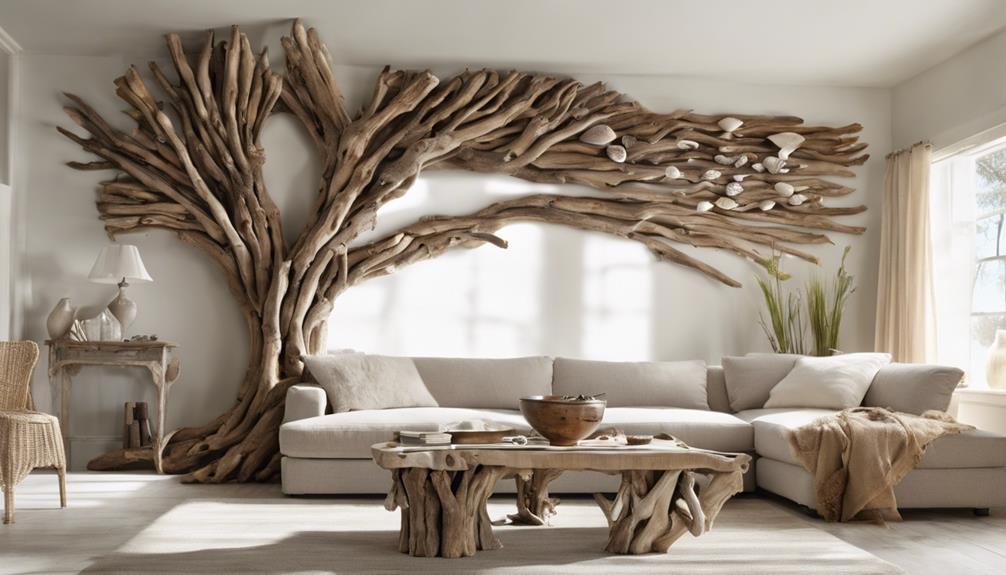
Let's enhance the natural charm of your living space by incorporating organic elements and found treasures to infuse a touch of the outdoors into your home decor. Natural light plays an essential role in interior design choices, and by strategically placing natural and found objects in your living room, you can create a harmonious environment that celebrates nature.
Consider using branches or wildflowers as cost-effective and visually appealing decor elements that bring a sense of freshness into your home. Found objects such as driftwood, stones, or shells can be creatively integrated into your design to add a unique touch. These natural decor items not only brighten up spaces but also evoke a feeling of tranquility and serenity.
Repurpose and Update Existing Items
Repurposing and updating existing items in your home can breathe new life into your space, transforming it with creativity and style. As an interior designer, I find joy in finding innovative ways to make the old feel new again.
Here are some exciting ideas to help you revamp your home:
- Design: Repurpose old curtains by adding trim, dyeing them, or turning them into pillow covers for a fresh look.
- Make: Update existing furniture with a coat of paint, new hardware, or reupholstering to match your current style.
- Interior Designer: Transform old jars into decorative vases by painting them, adding twine or lace, or filling them with flowers for a chic touch.
- Existing Curtains: Revamp outdated light fixtures by spray painting them, changing the shades, or adding decorative elements to modernize the look.
- Paint Color: Use leftover wallpaper scraps to line drawers, create wall art, or decorate trays for a creative and cost-effective update.
These simple yet effective techniques can elevate the design of your home without breaking the bank. Experiment with these ideas and watch your space transform into a stylish haven.
Experiment With Color and Patterns
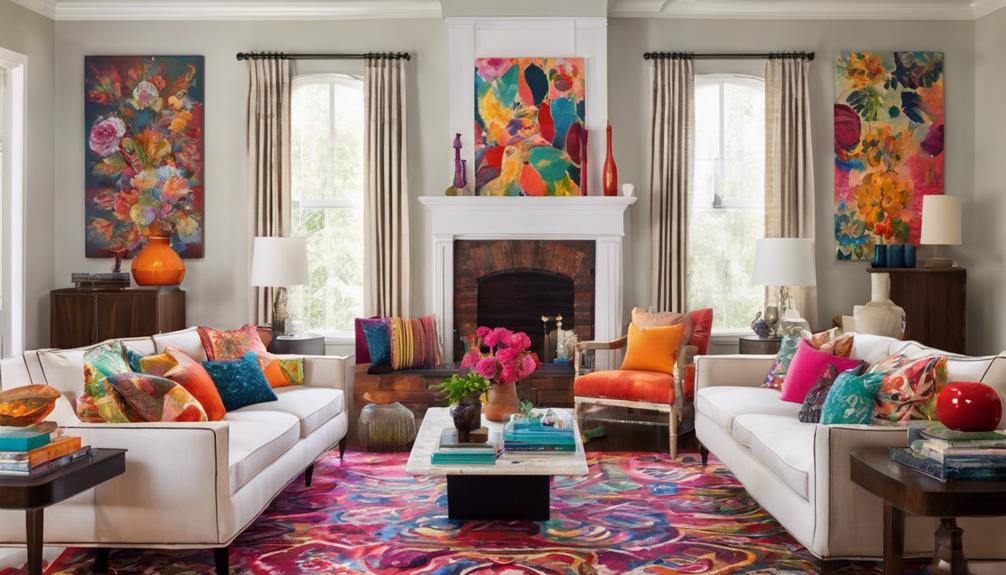
Experimenting with color and patterns can transform a space from ordinary to extraordinary, infusing it with personality and visual interest. Interior designers often recommend color blocking techniques, such as pairing bold hues like blue with neutrals, to create a striking and stylish ambiance.
Incorporating patterns, whether through accent walls or statement furniture pieces, adds depth and character to any room. For a more eclectic vibe, mix and match different patterns like stripes, florals, and geometric prints to achieve a dynamic and personalized aesthetic.
Consider incorporating abstract art or elements of mid-century modern design to further enhance your space. When exploring interior design ideas, leverage color psychology to evoke specific moods – calming blues in bedrooms or energizing yellows in kitchens.
To maintain harmony, balance colors and patterns by selecting a dominant color and complementary prints for a cohesive and visually appealing design scheme. For expert guidance, seek a design consultation to refine your color and pattern choices for a truly innovative and stylish home.
Focus on Personalized and Cozy Spaces
Crafting personalized and cozy spaces in your home involves curating elements that reflect your unique style and preferences, fostering a warm and inviting environment that resonates with your personality. Here are some tips to help you create a space that feels truly yours:
- Incorporate Personal Mementos: Display family photos, heirlooms, or trinkets that hold sentimental value to infuse your space with memories and a sense of history.
- Integrate Cozy Elements: Add soft throws, plush cushions, and warm rugs to create a tactile and inviting atmosphere that encourages relaxation.
- Create Cozy Nooks: Design intimate corners with a comfortable chair, a reading lamp, and a small side table to carve out spaces for quiet moments of solace.
- Personalize Your Space: Mix and match decor pieces that speak to your interests and passions, whether it's artwork, collectibles, or books, to showcase your individuality.
- Blend Functionality with Comfort: Choose furniture that not only looks good but also feels good, ensuring that your space is both stylish and cozy for everyday living.
Frequently Asked Questions
What Is the 70 30 Rule in Interior Design?
We allocate 70% of a room's color to a dominant hue and 30% to an accent color, creating visual balance and depth. This rule emphasizes one color while complementing it with a secondary color, resulting in a cohesive and harmonious color scheme.
How Do I Design My Home With Modern Interior Style?
Designing our home with modern style involves embracing neutral walls, clean lines, and minimalism. Incorporating industrial elements, primary colors, and functional furniture can transform spaces. Remember, modern design prioritizes functionality and simplicity for a stylish home.
How Can I Make My House Look Nice Inside?
To make our house look nice inside, we mix woven cane for elegance, layer strong colors and prints for an inviting feel, soften the ambiance with cabinet skirts, play with versatile blue schemes, and opt for timeless tile designs like subway tiles for a stylish touch.
How Can I Make My Room Look Better for Free?
We simply rearrange, let light in, declutter, personalize with photos, and repurpose decor. Our room transforms effortlessly without spending. This makeover is free, easy, and creates a stylish haven in our home.
Conclusion
To sum up, remember to:
- Declutter for a dazzling display
- Utilize natural elements for a touch of charm
- Repurpose with finesse for a fresh look
Experiment with colors and patterns for a pop of personality, and focus on creating personalized and cozy spaces. Let your home be a reflection of your unique style and personality, where every detail delights and dazzles.
Immerse yourself in design with determination and delight in the difference it can make!
- About the Author
- Latest Posts
Introducing Ron, the home decor aficionado at ByRetreat, whose passion for creating beautiful and inviting spaces is at the heart of his work. With his deep knowledge of home decor and his innate sense of style, Ron brings a wealth of expertise and a keen eye for detail to the ByRetreat team.
Ron’s love for home decor goes beyond aesthetics; he understands that our surroundings play a significant role in our overall well-being and productivity. With this in mind, Ron is dedicated to transforming remote workspaces into havens of comfort, functionality, and beauty.
Architecture Home Styles
Avoid These 2 LED Lights Disadvantages
Get ahead of potential LED lighting issues by uncovering the two significant disadvantages you need to be aware of for optimal performance.

As we installed LED lights in our office, we noticed a subtle yet persistent issue with flickering that affected our productivity. Understanding the nuances of LED lighting is crucial in avoiding such drawbacks.
When it comes to LED lights, there are two significant disadvantages that we need to be mindful of. By addressing these challenges proactively, we can harness the full potential of LED technology without compromising on quality or performance.
Key Takeaways
- Address voltage sensitivity with surge protectors for optimal LED performance.
- Opt for LED lights to save on electricity bills and benefit from long-term cost savings.
- Choose LED-compatible switches to avoid compatibility issues and ensure smooth dimming functionality.
- Consider environmental impacts and health risks of blue light when using LED lights.
Blue Hazard and Pollution
Blue light emitted by LEDs poses significant hazards to both human health and the environment due to its potential for causing light pollution and eye-related issues over time.
The blue light from LEDs contributes to environmental light pollution, disrupting the natural balance of darkness in the night environment. This not only affects wildlife but also impacts human beings by interfering with our circadian rhythms, potentially leading to sleep disturbances and reduced overall well-being.
Moreover, prolonged exposure to blue light from LEDs can lead to discomfort and eye strain, affecting human eyesight in the long run. The health hazards associated with blue light exposure are a growing concern, highlighting the need for measures to mitigate these LED disadvantages.
It's crucial to be mindful of the impact of blue light on our surroundings and take steps to minimize its negative effects on both human health and the environment.
Voltage Sensitivity

LED lights, while efficient and durable, are notably sensitive to voltage fluctuations, a factor that significantly impacts their performance and longevity. Here are some key points to consider regarding voltage sensitivity and LED lighting systems:
- Voltage spikes or surges can cause damage to LED bulbs, leading to premature failure.
- Implementing voltage stabilizers or surge protectors can help safeguard LED lights from voltage fluctuations.
- Specialized LED drivers are designed to regulate voltage and current, ensuring optimal performance and extending the lifespan of the LEDs.
- Consistency in voltage levels is crucial for maintaining the efficiency and longevity of LED lighting systems.
- Fluctuations in voltage levels can't only affect the brightness of LED lights but also impact their overall performance and reliability over time.
Spherical Light Distribution Issues
Spherical light distribution poses challenges in certain applications due to its potential for creating uneven lighting patterns and shadowing effects. LED lights with spherical distribution may lead to dark spots or reduced brightness in specific task areas, making them less suitable for focused lighting needs. Understanding the light spread of LED lights is crucial in selecting the right fixture to achieve optimal illumination. To illustrate the impact of spherical light distribution, consider the following table:
| Issue | Description |
|---|---|
| Uneven Lighting Patterns | Spherical LED lights can result in inconsistent brightness levels across an area. |
| Shadowing Effects | Dark spots may appear due to the light spread of spherical distribution, affecting visibility. |
| Reduced Brightness | Certain areas may experience diminished illumination compared to other lighting distribution types. |
| Focused Lighting Needs | Spherical distribution is less effective for tasks requiring concentrated or specific lighting. |
| Specific Task Areas | Applications demanding uniform lighting may face challenges with spherical light distribution. |
High Cost

Given the challenges of spherical light distribution, it's crucial to address the issue of high cost associated with LED lights. LED lights, while initially more expensive than traditional lighting options like halogen bulbs, offer significant advantages in energy efficiency and longevity, leading to substantial long-term savings. Here are some key points to consider regarding the high cost of LED lights:
- LED lights have a higher initial cost per bulb.
- The upfront investment in LED bulbs is offset by long-term savings in energy efficiency and longevity.
- LED bulbs can last up to 25 times longer than halogen bulbs.
- High-cost LED bulbs can result in significant reductions in electricity bills over time.
- Governments and utility companies may provide rebates or incentives to help offset the initial expense, promoting the adoption of energy-efficient lighting solutions.
Incompatibility With Traditional Controllers
Facing incompatibility issues with traditional controllers, users of LED lights may encounter challenges such as flickering or buzzing problems when dimming the lights. Some LED bulbs may not be compatible with standard dimmer switches designed for incandescent bulbs, leading to performance issues.
Incompatible LED lights may exhibit erratic behavior such as flickering or buzzing, indicating a mismatch between the bulb and the dimmer switch. These issues can result in reduced lifespan for both the LED bulbs and the dimmer switches. Moreover, incompatible LED bulbs may not dim smoothly or may have a limited dimming range when paired with traditional dimmers.
To ensure optimal performance and avoid these problems, it's crucial to use LED-compatible dimmer switches specifically designed to work with LED technology. By investing in the right dimmer switches, users can enjoy the full benefits of LED lights without encountering incompatibility issues that compromise their functionality.
Frequently Asked Questions
What Are 2 Disadvantages of LED Lights?
LED lights offer energy efficiency and longevity. However, two disadvantages include limited dimmability and varying white light hues.
Not all LEDs are dimmable, necessitating special switches for customization. Additionally, different manufacturers produce LEDs with differing white light tones, making it challenging to maintain consistent aesthetics.
Despite these drawbacks, advancements are continually addressing these issues, enhancing the overall appeal and functionality of LED lighting solutions.
What Is the Negative of LED Lights?
LED lights have many advantages, but a drawback is the potential for a cooler, bluish light that may not suit all preferences.
We also need to consider compatibility issues with certain fixtures and the higher upfront cost compared to traditional lighting options.
Despite these drawbacks, LED lights remain a popular and energy-efficient choice for many applications.
What Are the Disadvantages of Bright Lights?
Bright lights have several disadvantages, including causing discomfort, glare, and eye strain. Excessive brightness can lead to harsh shadows, reflections, and contrast, making it hard to focus. It disrupts natural ambiance and can create an uncomfortable environment, especially for sensitive individuals.
Proper fixture design is crucial to mitigate these issues and ensure a pleasant lighting experience.
Why Don't We Use LED Lights?
LED lights aren't always preferred due to initial cost, color temperature variations, dimmer compatibility issues, and limited fixture applications.
While LEDs offer energy efficiency, these drawbacks can deter their widespread use. Despite these challenges, advancements in technology are continually addressing these concerns, making LED lighting an increasingly viable option for various settings.
Conclusion
In conclusion, by being mindful of the potential blue light hazards and high cost associated with LED lights, we can mitigate their disadvantages and maximize their benefits.
Remember to research voltage sensitivity and compatibility with traditional controllers to ensure optimal performance.
Let's light up our spaces with energy-efficient and long-lasting LED lighting, while avoiding these two common pitfalls.
- About the Author
- Latest Posts
Introducing Ron, the home decor aficionado at ByRetreat, whose passion for creating beautiful and inviting spaces is at the heart of his work. With his deep knowledge of home decor and his innate sense of style, Ron brings a wealth of expertise and a keen eye for detail to the ByRetreat team.
Ron’s love for home decor goes beyond aesthetics; he understands that our surroundings play a significant role in our overall well-being and productivity. With this in mind, Ron is dedicated to transforming remote workspaces into havens of comfort, functionality, and beauty.
-

 Vetted2 weeks ago
Vetted2 weeks ago15 Best Leather Restorer Products to Revive Your Furniture and Accessories
-

 Vetted2 weeks ago
Vetted2 weeks ago15 Best Contact Paper for Kitchen Cabinets to Elevate Your Home Decor
-

 Vetted3 weeks ago
Vetted3 weeks ago15 Best Leg Massagers to Relieve Tension and Improve Circulation – Ultimate Guide
-

 Vetted4 weeks ago
Vetted4 weeks ago14 Best Lawn Tractors of 2024 – Ultimate Guide for Your Yard Maintenance
-

 Vetted1 week ago
Vetted1 week ago15 Best Drain Snakes to Unclog Your Pipes Like a Pro
-

 Vetted4 weeks ago
Vetted4 weeks ago15 Best Commercial Backpack Vacuums for Efficient Cleaning Tasks
-

 Vetted3 weeks ago
Vetted3 weeks ago15 Best Lawn Games for Adults to Elevate Your Outdoor Gatherings
-
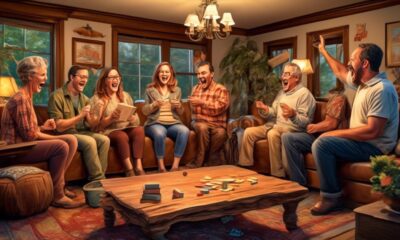
 Vetted4 weeks ago
Vetted4 weeks ago15 Best Group Games for Adults to Spice Up Your Next Gathering

















